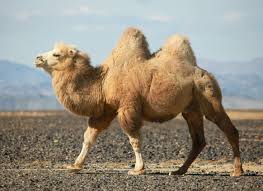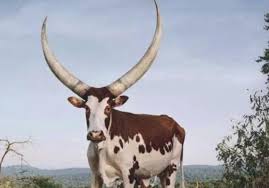
Avermectin
Brand Name:
Avermectin
Indications & Uses:
Parasites
Dosage Forms:
Water Soluble Powder, Liquid Solution, Injection Solution
Name:
Avermectin
Common Capacity:
- Suspension: 500ml/bottle, 1000ml/bottle
- Pour-over solution: 500ml/bottle, 1000ml/bottle
- Injection: 10ml, 50ml, 100ml/bottle
- Tablet: 10 tabs/blister, 10 blisters/box (100 tabs per box)
Common Concentration:
- Suspension:
- 0.08%
- 10%+0.5%; 10%+1% (Possibly a compound preparation, e.g., Ivermectin with other ingredients)
- Pour-over solution: 1%
- Injection:
- 1%
- 2%
- 3%
- 3.15%
- 1%+5% (Possibly a compound preparation, e.g., Ivermectin and Clorsulon)
- 1%+10% (Possibly a compound preparation, e.g., Ivermectin and Clorsulon or Closantel)
- 1%+12.5% (Possibly a compound preparation, e.g., Ivermectin and Clorsulon or Closantel)
- Tablet: 12mg , 136mg (Compound with Pyrantel Pamoate)
Applicable Animals:
Avermectin is a highly effective, broad-spectrum, low-toxicity antiparasitic drug, primarily acting on nematodes and external arthropods. It exerts its effect by interfering with the neurophysiological activity of parasites, leading to paralysis and death.
- Ruminant Animals (Cattle, Sheep): Mainly for the treatment and prevention of gastrointestinal nematodes, lungworms, eyeworms, mites, ticks, and lice in cattle and sheep. Injection or pour-over solutions are common forms.
- Monogastric Animals (Pigs): Used for the treatment and prevention of internal and external parasites in pigs, such as roundworms, lungworms, Sarcoptes mites, and lice. Oral solution or injection may be chosen.
- Pets:
- Other Animals: Avermectin can also be used for parasite control in other livestock and poultry species, but specific use requires veterinary guidance.
Usage and Dosage:
The usage and dosage of Avermectin vary depending on the dosage form, animal species, and body weight.
Oral Suspension/Pour-over Solution (for cattle, sheep, pigs):
- Cattle, Sheep:
- Suspension (0.08%): Oral dosage (further information needed).
- Pour-over Solution (1%): For external parasites, uniformly pour onto the back skin according to recommended dosage. Refer to product instructions for specific dosage.
- Pigs: Suspension (0.08%): Oral dosage (further information needed).
Injection Solution (for cattle, sheep, pigs, others):
- Standard Injection (1% or higher concentration): Primarily for subcutaneous injection.
- Cattle, Sheep: Typically administered at 0.2mg/kg body weight. For example, 1ml of 1% injection per 50kg body weight.
- Pigs: Typically administered at 0.3mg/kg body weight. For example, 1ml of 1% injection per 33kg body weight.
- Higher Concentration Injections (2%, 3%, 3.15%): Generally used for long-acting deworming, or adjusted based on specific disease and body weight. Typically allows for smaller injection volumes.
- Compound Injections (e.g., Ivermectin with Clorsulon or Closantel): Dosage must be determined based on the compound ingredients and product instructions. Typically considered based on the dosage of Ivermectin or other main ingredients. Primarily used for simultaneous control of internal and external parasites or to broaden the spectrum of anthelmintic activity.
Tablets (for pets):
- Ivermectin 12mg Tablet: Dosage must be determined based on pet body weight and product instructions, commonly used for heartworm prevention and treatment of Sarcoptes mites in dogs.
- Ivermectin 136mg + Pyrantel Pamoate 114mg Tablet: Used for heartworm prevention in dogs 3. Dosage is determined by body weight; refer to product instructions for details.
Dosage by Growth Stage:
- Young Animals: Use with caution; dosage should be precisely calculated based on body weight to avoid overdose. Some breeds or individuals are sensitive to avermectin-class drugs and require dosage testing or veterinary consultation.
- Adult Animals: Use according to the recommended dosage in the instruction manual based on body weight and infection status.
- Pregnant Animals: Use of Avermectin during pregnancy requires veterinary guidance, and some high doses may not be recommended.
- Lactating Animals: Consider whether the drug can be excreted through milk and affect offspring.
Applicable Diseases and Symptoms:
Avermectin is primarily used for the treatment and prevention of various internal and external parasitic infections.
- Internal Parasites:
- Gastrointestinal Nematodes: Such as roundworms, hookworms, whipworms, causing emaciation, stunted growth, malnutrition, and diarrhea.
- Lungworms: Causing coughing and respiratory distress.
- Heartworm: (Especially in dogs) Causing cardiopulmonary dysfunction, potentially fatal in severe cases.
- External Parasites:
- Mites: Such as Sarcoptes mites causing skin itching, hair loss, and dermatitis.
- Lice: Causing skin irritation and itching.
- Ticks: Transmitting diseases, causing anemia and skin lesions.
- Fleas: Causing itching, dermatitis, and transmitting tapeworms.
Precautions:
- Sensitivity: Certain dog breeds (e.g., Collies, Australian Shepherds, and their crosses) are highly sensitive to avermectin-class drugs due to an MDR1 gene defect. They should not be used or used at low doses under strict veterinary guidance, otherwise, neurological toxicity (ataxia, tremors, coma, or even death) may occur.
- Administration Route: Strictly follow the prescribed route of administration (oral, injection, pour-on) as stated in the instructions; do not change arbitrarily.
- Injection Site: Injections are typically for subcutaneous use; avoid intramuscular or intravenous injection.
- Accurate Weighing: Ensure precise dosage calculation based on animal body weight to avoid overdose or underdose.
- Repeated Dosing: If repeated dosing is necessary, allow sufficient time between doses and determine based on the parasite life cycle and control program.
- Storage: Store sealed, protected from light, in a cool and dry place.
- Environmental Impact: Avermectin is toxic to aquatic organisms; avoid contaminating water sources.
- Withdrawal Period: Strictly observe the withdrawal period specified in the product to avoid drug residues.
Contraindications:
- Contraindicated in animals with hypersensitivity to Ivermectin or other avermectin-class drugs.
- Contraindicated or used with extreme caution in dog breeds sensitive to Avermectin (e.g., Collies).
- Use with caution in severely debilitated or sick animals.
- Use with caution in pregnant and lactating animals under veterinary guidance, especially at high doses.
Post-Administration Care:
- Observe for Adverse Reactions: After administration, observe the animal for any abnormal reactions, such as neurological symptoms (tremors, lethargy, dilated pupils), vomiting, or diarrhea. Discontinue use immediately and contact a veterinarian if observed.
- Environmental Cleaning: Clean and disinfect the animal’s living environment to remove parasite eggs or larvae and prevent re-infection.
- Regular Monitoring: For high-risk or easily infected animals, regular fecal examinations or external body checks are recommended to assess the effectiveness of deworming and to promptly detect re-infection.
- Nutritional Support: Animals that have been affected by parasites may require enhanced nutritional supplementation after deworming to promote recovery and growth.
Applicable Animals
Animal species suitable for this veterinary medication


